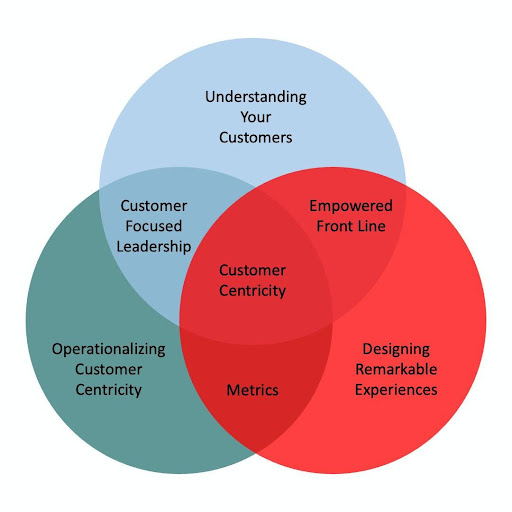Improve your Marketing Ops every week
Subscribe to our blog to get insights sent directly to your inbox.
Confront your process problems head on with a Sherpa by your side.
Explore support options that are tailored to meet you wherever you are on your climb.
Browse our pioneering Agile marketing courses
Learn from the stories of marketers already on the road to process improvement.
Featured Resource

State of Agile Marketing
Learn from 8 years of study on how marketers are increasing their agility.
Download Report
At its most basic, an Agile culture is a way of working where people focus on the Agile principles and values.
It’s a culture that promotes cross-functional collaboration, practices customer-centricity, focuses on outcomes over outputs, experiments regularly, and makes decisions based on data, not opinions.
It’s also a culture where nearly everyone has a growth mindset, rather than a fixed mindset, and where continuous improvement, rather than "this is the way we've always done it", is the norm.

A growth mindset, originated by Stanford professor Carol Dweck in her book Mindset, describes people who believe that their success depends on time and effort. It’s the first necessary element for building an Agile culture.
People with a growth mindset feel their skills and intelligence can be improved with effort and persistence. They embrace challenges, persist through obstacles, learn from criticism, and seek out inspiration in others’ success.
These people believe that they can get better at something by dedicating time, effort, and energy. Working on one’s own flaws, and the process of improvement —not its outcomes —are the most important components.
With time and practice, people with a growth mindset believe they can achieve what they want, which is key for thriving in an organization that has embraced an Agile culture.
Open communication, trust, and a willingness to collaborate are also essential components of an Agile culture. This kind of collaboration and transparency leads to improved productivity.
When people collaborate this openly, they’re able to achieve common goals and complete tasks more efficiently. This collaboration allows individuals to leverage their collective skills and knowledge, which leads to better decision-making, problem-solving, and increased productivity.
Collaboration can also lead to enhanced creativity and innovation.
Working freely and openly with others sparks new ideas and promotes innovative thinking. When people work together, they share diverse perspectives and approaches, which lead to breakthroughs and new discoveries.
Lastly, collaboration helps to create a more positive work environment, which can lead to increased job satisfaction and better chances for sustaining an Agile culture within the organization. When people feel valued and supported by their colleagues, they’re more likely to feel engaged and motivated at work.
Agile encourages cross-functional teams where possible to enhance collaboration. But cross-functional teams have benefits that go beyond collaboration like:
Greater efficiency: Cross-functional teams can streamline processes and reduce bureaucracy by eliminating the need for hand-offs between departments or individuals.
Faster decision-making: Cross-functional teams allow for more Agile decision-making by bringing together all the necessary expertise and perspectives to a decision. This can help organizations that strive for an Agile culture respond more quickly to changing market conditions or customer needs.
Increased learning opportunities: Cross-functional teams provide opportunities for team members to learn new skills and broaden their understanding of the organization as a whole.
Improved employee engagement: Cross-functional teams provide opportunities for employees to have visibility to the impact of their work, leading to increased job satisfaction and engagement.
Agile is by its very nature incremental and iterative. Teams create increments of value, whether as products, experiences, or marketing campaigns. They then iterate on these increments, constantly improving them through feedback from stakeholders and the market.
Working incrementally allows marketers to break work into small pieces and take advantage of small batch sizes to bring work products to customers sooner, delivering value early and often.
Once marketers have built increments, they can then iterate on a regular cadence to integrate new learnings. This approach helps marketers reduce risk by understanding how customers respond to marketing efforts before committing large amounts of time and budget to work such as a marketing campaign, which is a crucial element of the Agile culture.
An iterative, incremental approach increases our learning, as we get feedback more often, and we can adjust frequently, responding to changes rapidly.
Before proceeding to learn the 5th element of an Agile culture, take a moment to explore The Agile Marketing Credo — a clear, practical compass for agility that actually works.
In addition to working incrementally and iteratively, Agile organizations act like scientists.
They create hypotheses about what customers will like, what will work in their marketing context, and they test these hypotheses through experiments.
Using this approach, they’re always testing. Decisions are made not through meetings in conference room, but using data gathered through experiments.
As a result of all this experimentation, Agile organizations fail, early and often. They take chances and they stretch the boundaries of what the organization has tried before.
But even when experiments fail, they learn and apply valuable lessons.
Agile organizations are relentless in their focus on the customer. The customer has a seat in every meeting.
Everyone creates content, events, and experiences with an eye turned towards the customer and their needs and wants.

As explained in Agile Marketing Alliance’s article Introduction: The Value of Customer Centricity, organizations with an Agile culture must understand their customers, design remarkable experiences for them, and operationalize customer centricity. To do so, they must have customer-focused leadership, empower their front line, and make sure that everyone focuses on the right metrics of success.
An Agile culture requires continuous improvement. Agile cultures aren't created to remain static. They are constantly retrospecting, experimenting with new ways or working, and improving every aspect of their work.
This is a simple reflection of the reality that no Agile organization exists in a vacuum. The world around them is constantly changing, meaning they must also change to adapt. Without continuous improvement even the best Agile organization is doomed to atrophy.
Agile cultures embody the values of respect for individuals, psychological safety, and accountability. These three values complement one another.
If you respect someone, you act towards them in a way that promotes psychological safety. They feel free to express their opinions because they know you will respect them enough to listen closely and respond in a thoughtful manner. As a result, critical ideas and feedback get heard instead of suppressed for fear or rejection.
If you respect someone, you also hold them accountable in a kind way, a psychologically safe way.
In an Agile culture, it's not just leaders holding employees accountable, it's everyone holding each other to account. Peers hold each other accountable; employees hold leaders accountable. All of this done in a way that is respectful and makes people feel safe and respected. It also creates a collective sense of responsibility for improvement.
Before proceeding to learn how to create an Agile culture, why don't you take a second to get the most recent State of Agile Marketing Report?
It begins with leadership. Leaders need to be Agile themselves before embarking on a massive Agile “transformation” training everyone except the leadership team. In practice, that means:
To boost the Agile knowledge within your organization in a quick way and build an Agile culture swiftly, check out the library of microlearning content we developed based on years of working with Agile marketing teams, and the following 4 microlearning paths in particular:
Each of them contains 10 bite-sized lessons, 20 short engaging videos, and 10+ downloadable resources that can boost your Agile knowledge in minutes even during the busiest days.
Creating an Agile culture is not easy. There are a lot of factors to consider and a lot of moving parts. It’s not something that happens overnight, and it is not something that can happen once and you're done; it requires constant maintenance.
But the rewards are immense: organizations that are efficient, effective, responsive, and feel like great places to work. For companies looking to thrive in today’s fast-changing world, these benefits are essential foundations for success.
Jim Ewel is one of the authors of the Agile Marketing Manifesto and a co-founder of the Agile Marketing Alliance. He has helped over 80 companies adopt Agile marketing, including organizations as diverse as T-Mobile, Salesforce, Best Buy Canada, and others. Jim is also the author of The Six Disciplines of Agile Marketing.
Subscribe to our blog to get insights sent directly to your inbox.
Subscribe to our blog to get insights sent directly to your inbox.